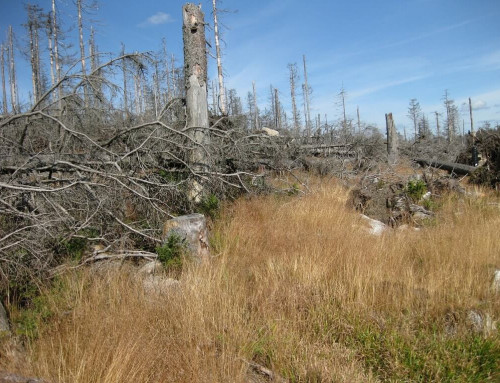
Desertification in the arid parts of Kenya. image credit Rascona-of-the-week.
ZIMSEC O Level Geography Notes: Desertification
The meaning of desertification
- Desertification literary means the making of deserts and several definitions have been offered for the term all expressing this idea.
- Desertification refers to the spread of desert conditions for example resulting in aridity or semi-arid conditions and scant vegetation cover in the encroached area.
- Desertification is therefore the spread of deserts as well as a reduction in the biological productivity of a given piece of land.
- It is also attributed to a process by which previously productive land turns into a desert like land and its agricultural productiveness drops by ten percent or more due to natural and human factors.
A more comprehensive definition might define desertification as an enviromental degradation process brought about by both natural causes (e.g. chronic droughts) and excessive human activities (such as climate change and deforestation) resulting in the fall in productivity of a given piece of land and the spread of desert like conditions to the affected piece of land.
Natural factors that lead to desertification
- Climate change for example a reduction in the amount of rainfall received at a given area or increases in evapotranspiration rates can lead to desertification.
- The El Nino effect resulting in droughts.
- Acid rain leads to the reduction of land productivity.
- A land’s distance from the sea.
- Continental drift for example most of the Sahara desert enjoyed pluvial periods during the so called Quaternary era when the African plate was further south that it currently is and the Sahara region occupied the latitudes currently occupied by the present day Savannah regions.
Human factors
- Deforestation as people cut down trees for use as firewood, thatching, making furniture and other industrial and domestic uses.
- The clearing of land for agricultural use.
- Overgrazing for example in the Sahel region.
- Overpopulation as more population increases are not matched with increases in resources.
- Expansion of human settlements such as towns and land is cleared for industrial and residential use.
- Mining activities for example open cast mining and oil mining which leads to oil spills and destruction of vegetation.
- Salinisation which makes soils less fertile and makes vegetation growth impossible.
NB Human factors and Natural (Physical factors) often combine to produce desserts during the desertification process.
Effects of desertification
- A reduction in vegetative cover due to deforestation and drought.
- Barren sandy soils and sometimes soil hardening.
- Increased surface runoff due to reduced vegetative cover resulting in the formation of gullies and dongas.
- Reduced soil fertility.
- Reduced productive capacity of agricultural land.
- Reduced land carrying capacity.
- Death of livestock as a result of water and pasture shortage.
- Water and pasture shortages.
- Famine and starvation.
- Reduction in annual rainfall and persistent droughts.
Example of desertification (Sahel Region)

A map of the Sahel region. Image credit tamu.edu
- The Sahel is the semi-arid transition region between the Sahara desert to the north and wetter regions of equatorial Africa to the south.
- It extends from the Atlantic in the west to the Indian ocean in the east.
- Its annual rainfall varies widely from year to year, and the land consists of stabilized ancient sand seas is one of the poorest and most environmentally degraded areas of the world.
- It forms a boundary between the Sahara and the more wetter parts of Africa.
- The Sahara desert is slowly encroaching on Sahel land due to overpopulation and overgrazing, persistent droughts, erratic rainfall and climate change.
- The area has been plagued by persistent droughts.
- The drought was partly caused by natural causes in the form of climate change.
- The harmattan winds that affect the area are dry because they come from the Atlas mountains.
- Human activities have also contributed to the desertification in the area.
- The people of the region practice Nomadic pastoralism, moving from place to place looking for fresh pastures.
- This movement has caused deforestation and overgrazing as more and more animals grazed repeadley on the same piece of land.
- This resulted in the degradation of the land whose productivity decreased.
- This meant that less productive land would be available while the number of animals keept and keeps increasing worsening the situation.
Effects of desertification in the Sahel
- Drying up of wells and springs
- Destruction of pastures.
- Loss of life due to droughts and famine. A quarter of the people in the region died in the droughts of the 1970s.
- A massive influx of refugees into the adjacent countries of Mali and Niger resulting in semi-permanent camps which usually have unsanitary living conditions.
- Loss of livelihood as animals died.
Reaction
- UNESCO held a meeting in Nairobi Kenya to alert the world about the disaster.
- They also provided food and water to the affected people.
- Other international relief agencies such as UNICEF and the Red Cross were involved.
- Concerted efforts have also been made to educate the people of Sahel on the effects overpopulation, overgrazing and conservation methods.
To access more topics go to the Geography Notes page.



